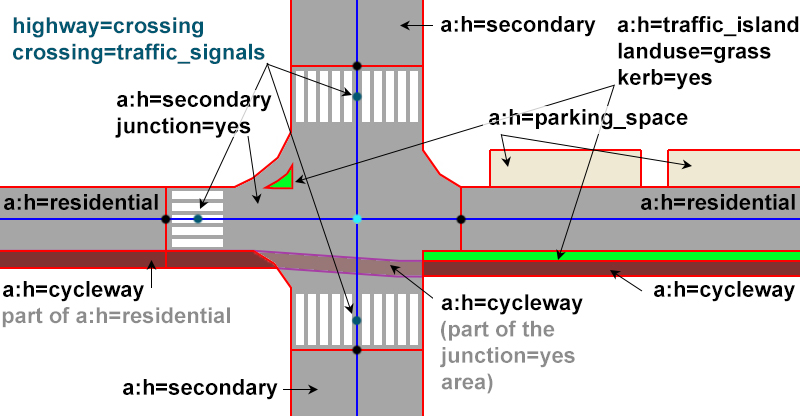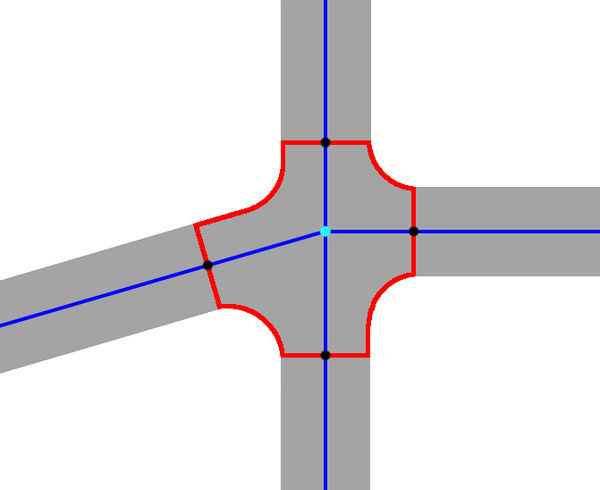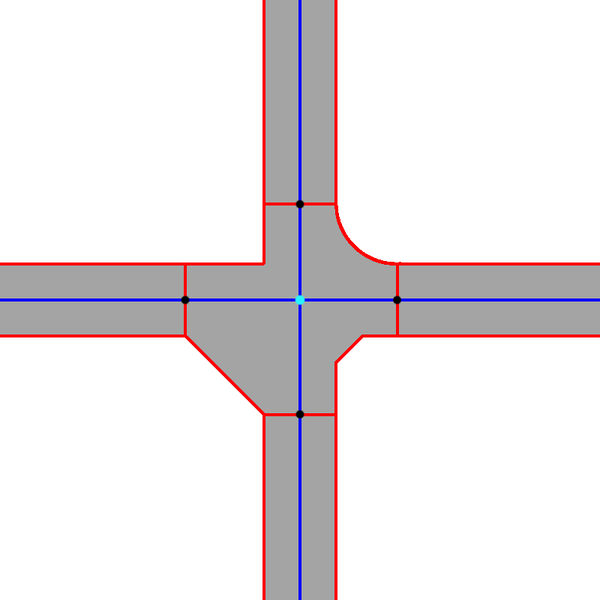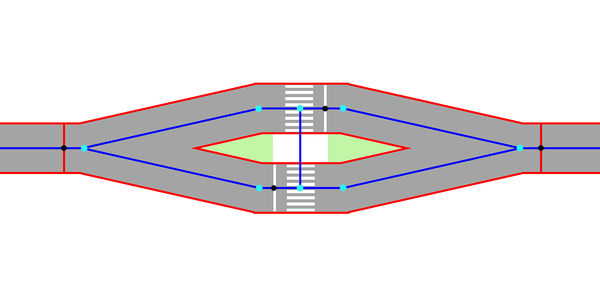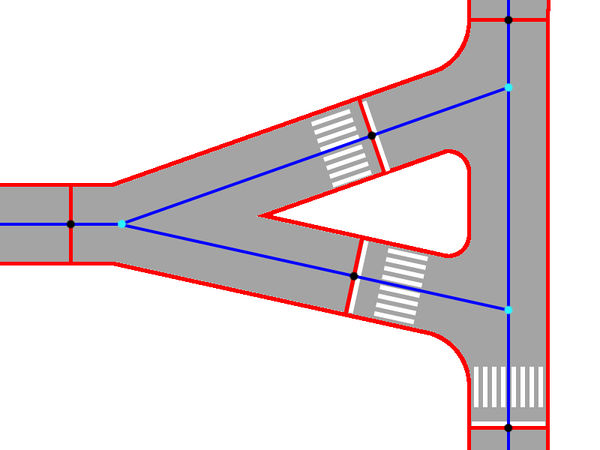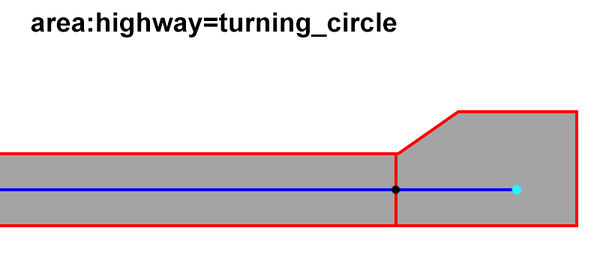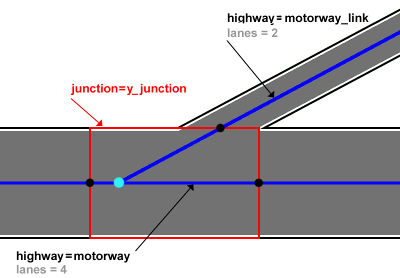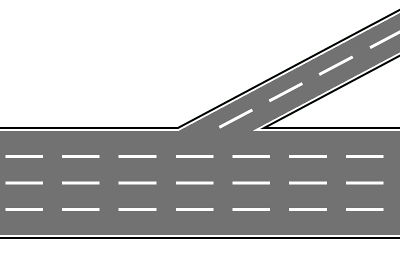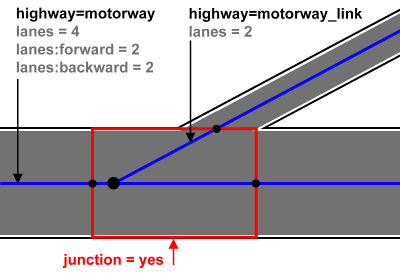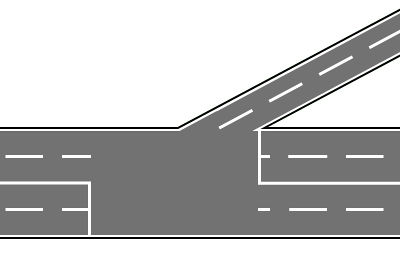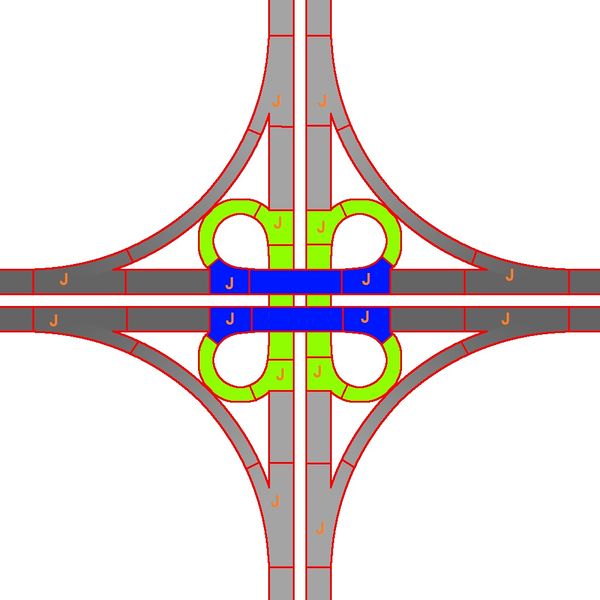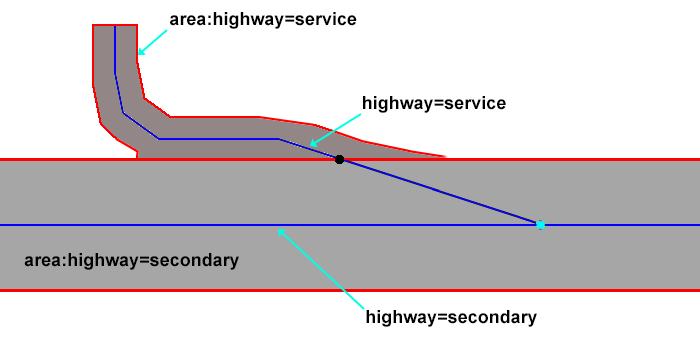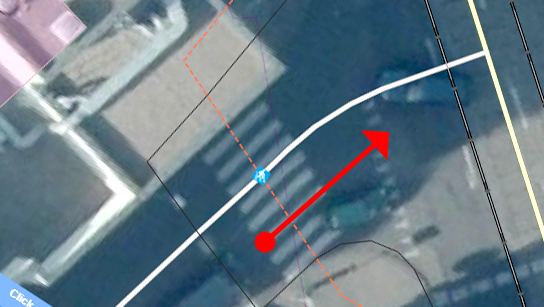Proposal:Area highway/mapping guidelines
This page shows how to divide streets and their junctions in separate area:highway elements.
Tagging
An exampe of possible x-junction:
Dividing of simple crossings without pedestrian ways marked on the street surface
Gabled crossings
Turning circles and dead ends
Simple turning circle. The turning area is drawn as separate area:highway=turning_circle area.
Street with dead end. The street highway=* and area:highway=* have the same last point: noexit=yes
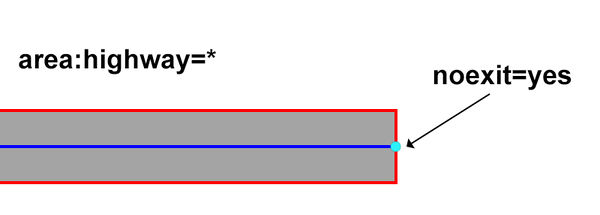
Rendering of lanes
Please note: the idea of lane rendering is recently nowhere realized.
The standard areas which should be rendered with the number of lanes are: area:highway=* and area:highway=* with junction=y_junction.
area:highway=* with junction=yes or junction=roundabout does not include rendering of lanes
Example of behaviour of rendering of areas with junction=y_junction tag:
Result after rendering:
The street of higher category, which has two common k points with the area:higway is used to render continuously the number of lanes. The street with lower or the same category but with only one common point k with the area:higway=* wil be ignored in rendering process:
Result after Rendering:
More complex crossings
Motorway and crossings with more levels
In case of more overlapped levels every area:highway should be drawn and get additionally tag layer=*.
Note: In this case: all polygons have area:highway=* (probably motorway, motorway_link or trunk), this one with orange J's have additionally junction=* tag, blue colored polygons gets additionally tag: layer=1.
Border of service roads
It is not necessary to draw an junction area in case of: service roads, footways, cycleways trucks and generic roads.
Parallel ways
Due to the recent approach not physical street dividers are ignored.
For instance:
This mapping makes advanced lane rendering impossible.
For right rendering we should divide this street in three areas:
We need also two separate oneways (note that it NOT an accepted tagging to split road into two oneways in such case):
The result could be rendered similar to this mockup:
If the lanes and turn:lanes attributation exist, the lanes and turn restrictions can be visualized.
Simple crossing example
There is an example, how to map a pretty simple crossing with a:h.
Satelite image:
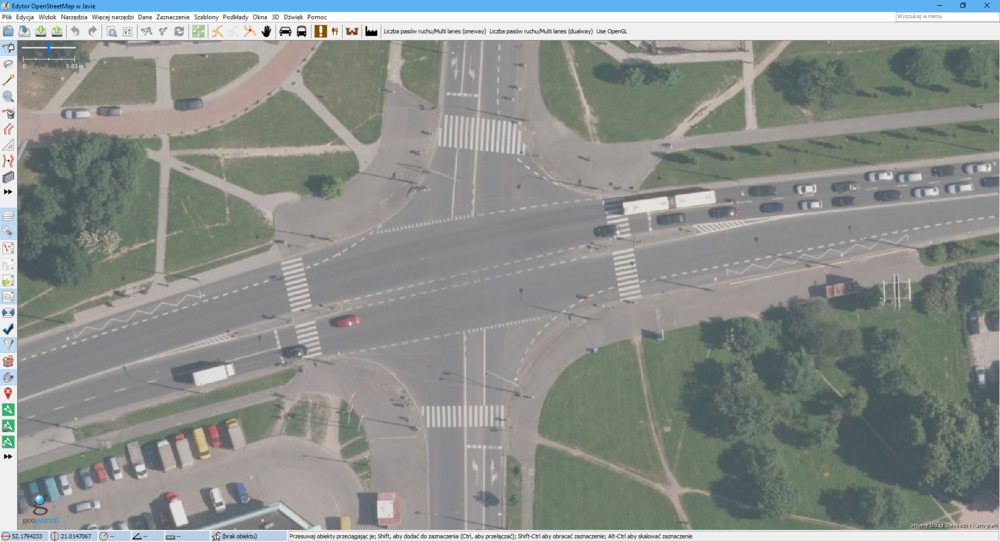
Before:
OSM data before a:h mapping:
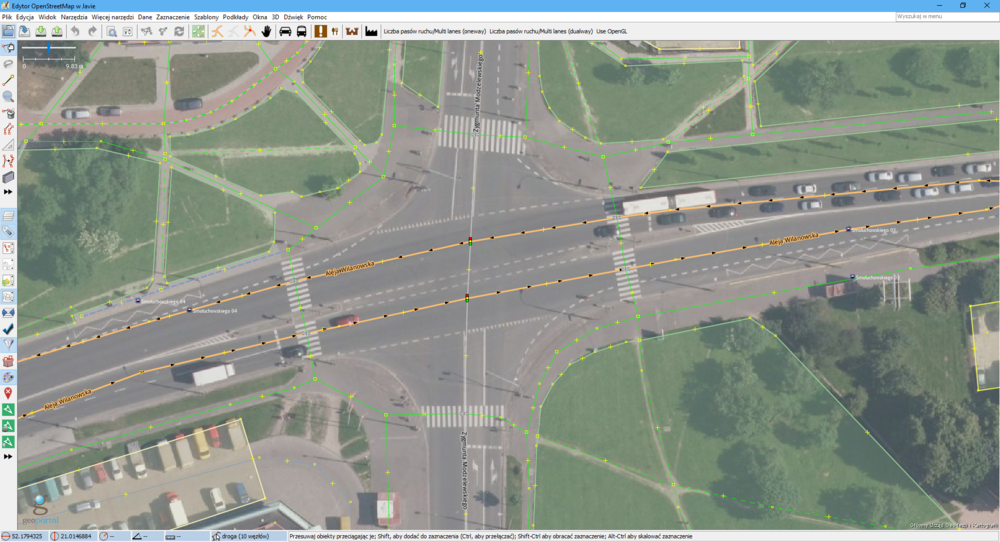
After:
Crossing after a:h mapping using Style for visualisation of area:highway tags made by Domiss:
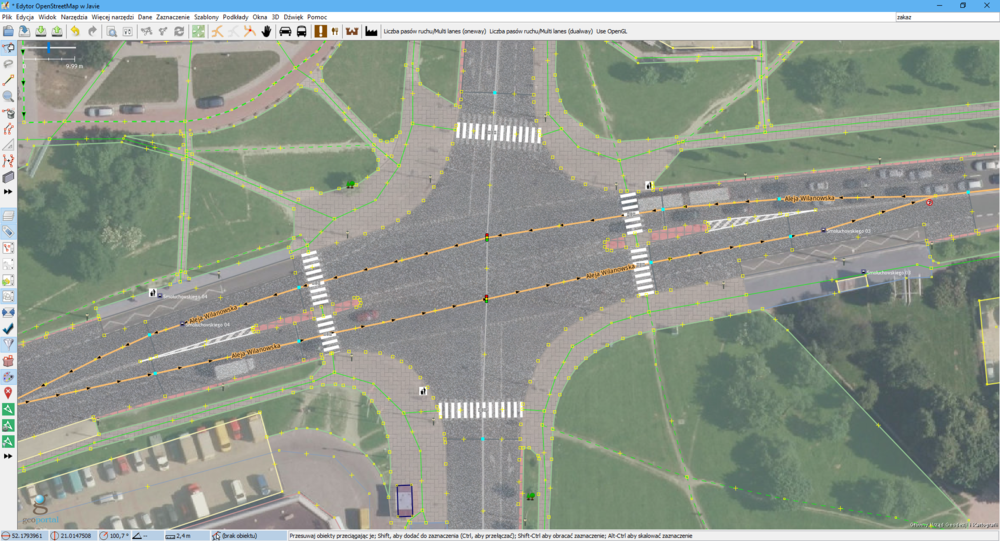
Crossing after a:h mapping with my own style:
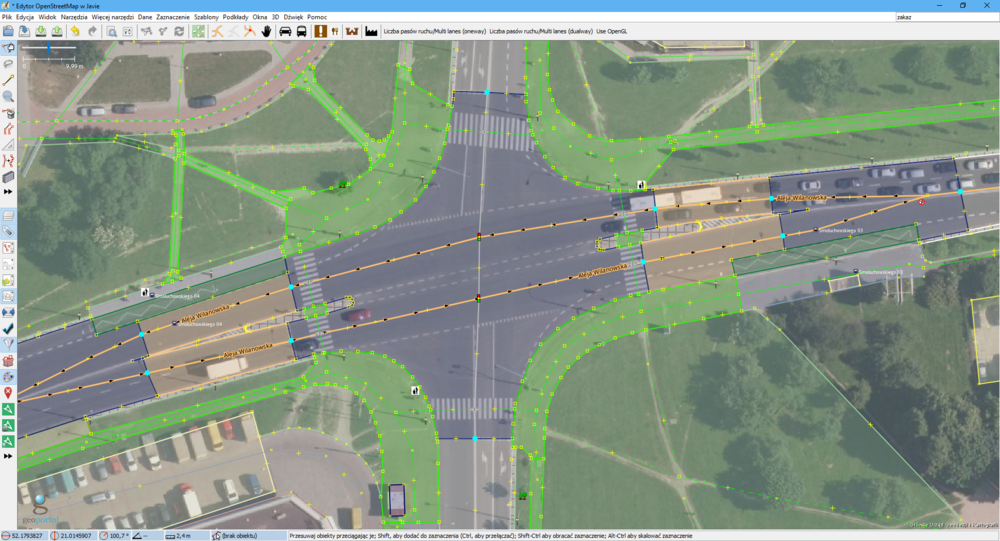
a:h description:
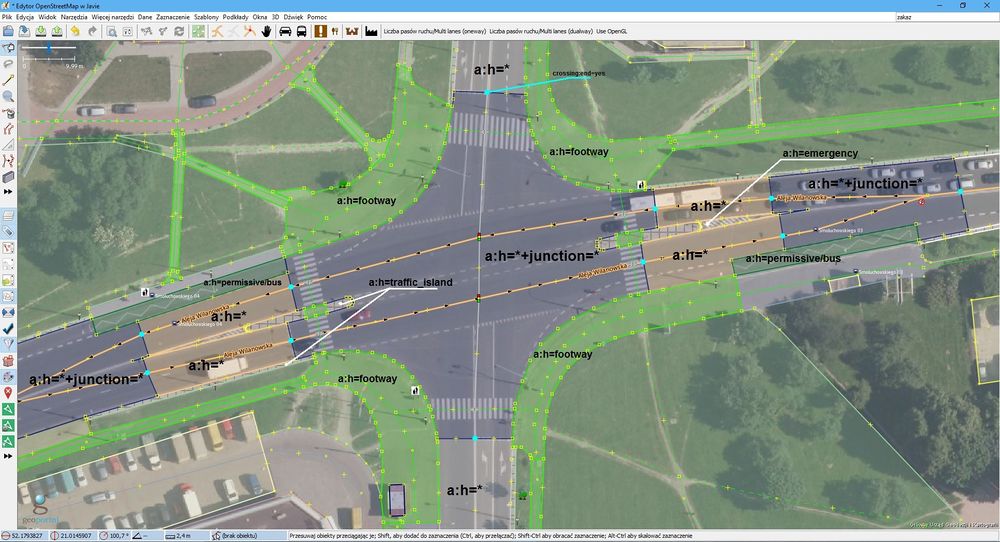
Crossing from here.
Rendering interpretation of the tag direction
For tag area:highway=emergency:
For tag highway=footway with footway=crossing:
